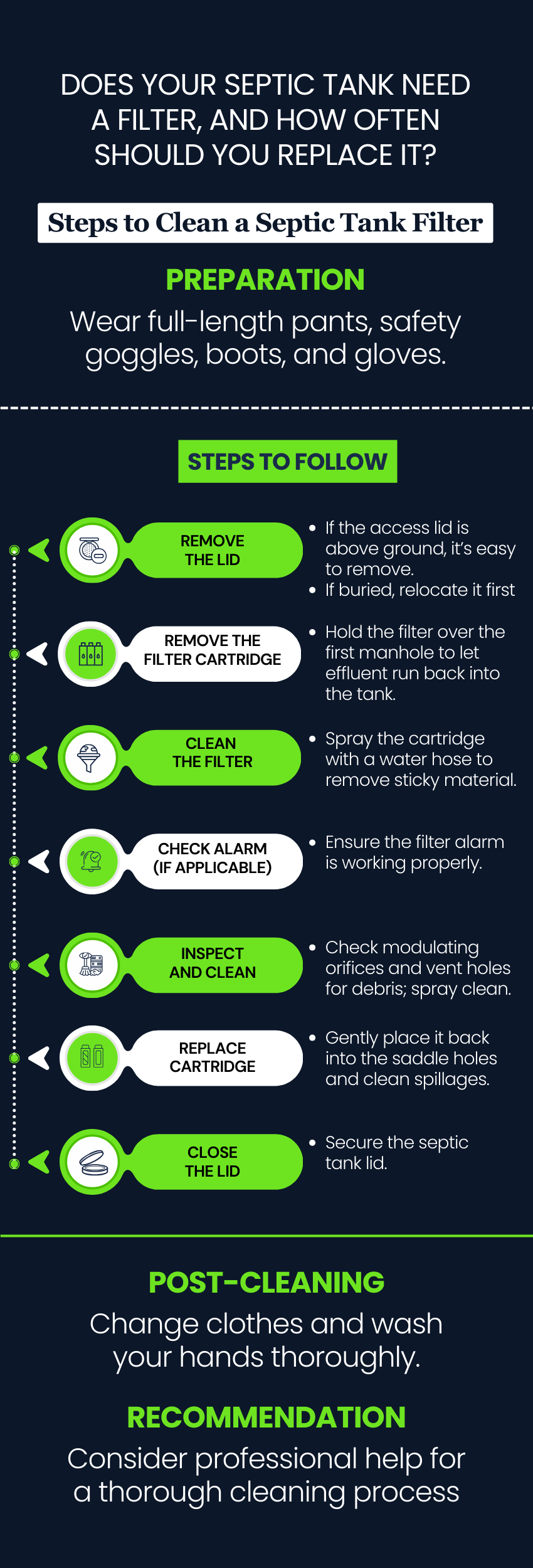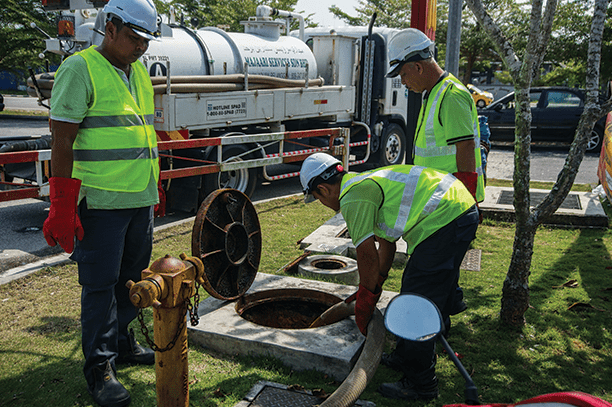When you compromise in the maintenance of the drain field, you may have to bear the brunt of the situation later on with a heavy price- both on the fiscal & environmental front. It is vital to ensure that the septic tank remains operating. Go through this article to get an idea about the effluent filter, its advantages and disadvantages, and the steps to be followed for maintenance. We tried to cover up every possible question that comes to your mind regarding a septic tank filter.
What is a Septic Tank Filter?
The septic tank effluent filter is the cylindrical device installed on the outlet baffle of a septic tank which assists in removing the solid from wastewater. These septic filters are specifically designed to protect the leach field.
Eliminating the solid particles from the septic tank by installing and maintaining the septic tank filter can minimize the risk of blockage and malfunctioning of the drain field.
The septic effluent filter is an additional barrier for all the solid waste; it prevents the solid particles from making their way into the drain field. If the drain in the home seems sluggish or there is any trickling noise from the drains around your house, then this can be the effluent filter. A gurgling noise can also be a sign that you should pump the septic tank.
Benefits of Septic Filters
In the case of septic filters, there are myriad benefits. According to experts, installing a septic filter can extend the septic drain field’s life and enhance its longevity. Furthermore,
- Easy installation – just push the filter in the outlet pipe.
- Easy to maintain and cost-effective.
- Excellent filtration for solids like toilet paper, hair, lint, etc.
- Bristles lock in place to prevent the filter from floating up.
- You get a longer life span because the debris is sorted based on particle size.
- It can be washed. However, it’s cheap enough to be easily thrown away and be replaced with a new one.
- It can be used for any type of property- residential or commercial.
- Independent testing shows they trap more solids per square inch than slot filters.
ALSO READ: 5 COMMON REASONS FOR SEPTIC TANK OVERFLOWING AFTER BEING PUMPED
How Often Should the Septic Tank Filter Be Cleaned?
Like any other septic tank filter, your effluent filter also must be cleaned and maintained regularly. Most of the effluent filters will work smoothly for years after installing the septic tank. However, after a couple of years, you may have to call a professional to clean up the effluent of the septic tank to ensure there are no major blockages.
Most plumbers may advise you to get the septic tank effluent filters cleaned whenever the tank is pumped. For some families, it may be as often as once a year or several times in one year. For some, it might not be that often.
How to properly wash the Septic Tank Filter?
Let’s take an ideal scenario; only the wastewater from the tank is draining to the drain field. However, there are possibilities that the wastewater may carry other unwanted waste like solid waste, hair, plastic substances, used sanitary pads, and grit into the drain field. When debris enters the drain field, it can cause pollution and blockage. In this way, it emphasizes the importance of the septic tank filter. Failure to clean up the septic tam filter may result in serious clogging and other related problems.
Steps you need to follow when cleaning the Septic Tank Filter
Before cleaning the filter, ensure that you are dressed in full-length pants, safety goggles, boots, and gloves. Then you are all set to clean the septic tank filter by following these steps. However, since a lot of steps are involved in septic cleaning, we highly recommend taking help from a professional to make sure everything runs smoothly.
- Start the process by removing the lid of the septic tank; this will not be difficult if the access lid is above ground. If that is buried, you might have to relocate it first; then, you can move ahead with the septic tank cleaning.
- After removing the access lid, go ahead and remove the filter cartridge. Ensure to hold the filter over the first manhole, so that effluent will run back into the septic tank. If you drain it in the wrong manhole, untreated wastewater may go into the drain field.
- Spray with the water hose to remove the sticky material from the cartridge.
- Some filters have an alarm that acts when there is a need for cleaning. If you have such a filter, make sure it is working properly.
- Inspect the modulating orifices and vent the hole to ensure no such debris is stuck. If you find the debris, spray it away with a hose.
- Replace the cartridge gently into the saddle holes and clean the spillages around the area.
- Close the septic tank lid.
- Change the clothes right away, then wash and sanitize your hands.
Who should you call for Septic Issues?
Keeping your septic clean is the thumb rule for a healthy septic system. Since you go for septic system cleaning once in a couple of years, inspect it twice a year, right before and after the winter. It would be best if you use a filter that has an alarm. It is programmed to notify you when there is a need for cleaning. If you take care of your filter regularly and maintain it, it will serve you for years without malfunctioning. American On-Site Septic is here at your service to save you time and money. We have years of experience in cleaning and maintenance of septic filters in Molalla, Newberg, Sherwood, Wilsonville, Oregon, and surrounding areas. We believe in providing top-notch service, so the client does not have to worry about future repercussions. Contact us today to book your appointment.







